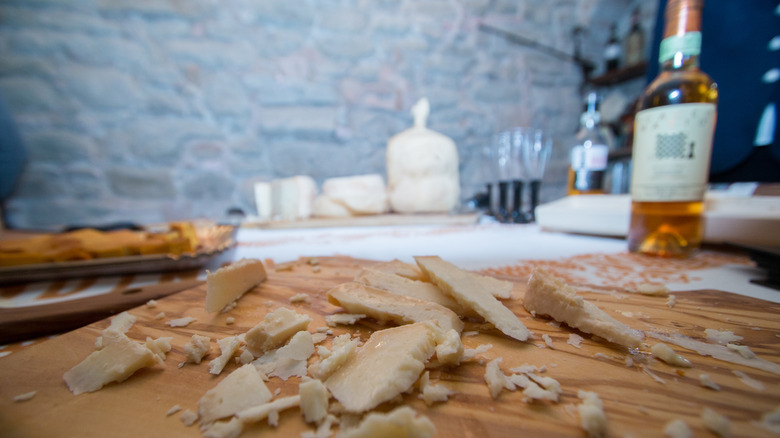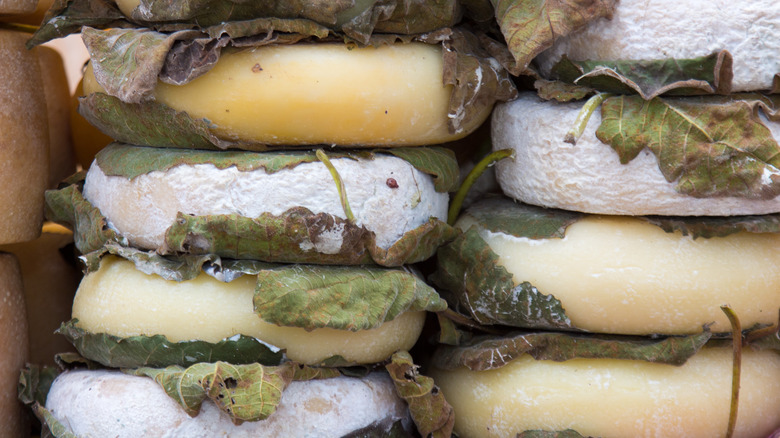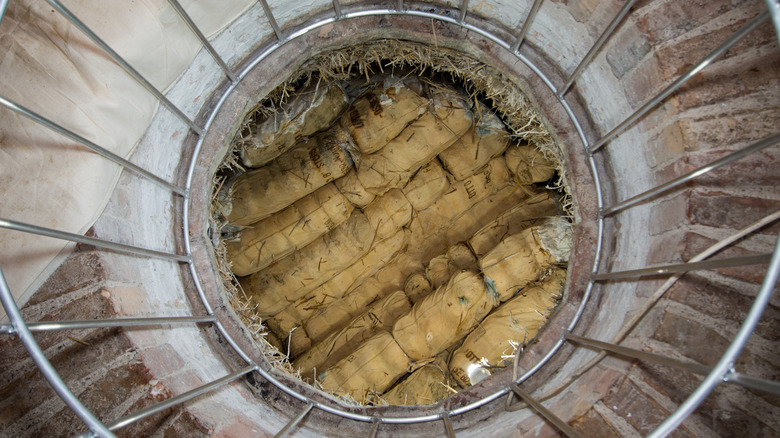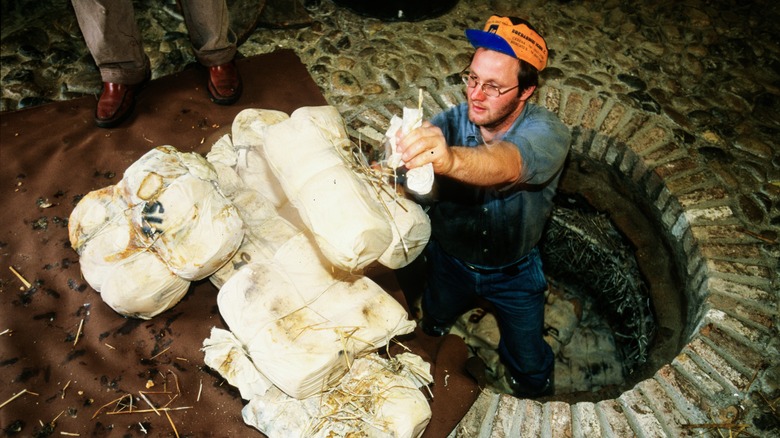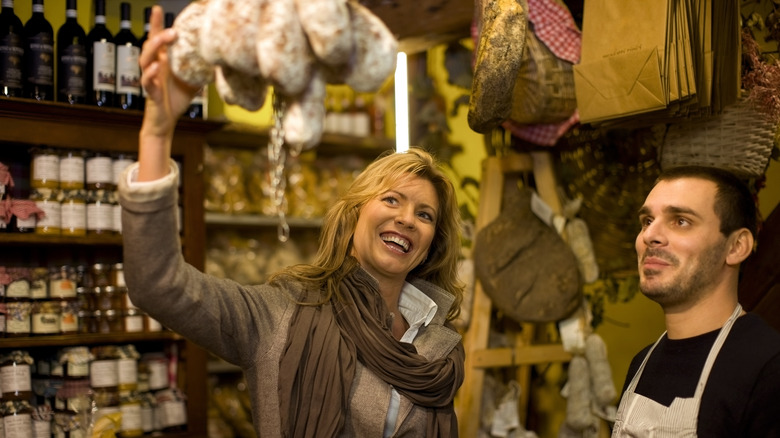The Aged Italian Cheese That Hasn't Changed Since Medieval Times
A specialty group of Italian cheeses are labeled P.D.O, an acronym for Protected Designation of Origin (via AFIDOP). This designation refers to cheeses that are made in specific areas, and these locations are the only places where that exact type of cheese can be made. P.D.O cheeses also have to pass a strict set of rules and regulations set forth by the European Commission, including following a strict procedure to make the cheese, how to properly sell it in markets, and more.
In Italy alone, there are 47 types of P.D.O cheese, so when you see those three letters on a label, you know the product you are purchasing is a special and very unique kind of cheese. Such is the case with P.D.O Formaggio di Fossa di Sogliano. Not only does this cheese carry the P.D.O designation, it carries history — a long history that dates back to antiquity when cheese was placed in cold, dark underground caves to mature.
History of buried cheese
Fossa cheese was first made in the Italian village Sogliano al Rubicone, according to Via Emilia. The area is surrounded by hills, and the site estimates that the pits the cheeses were placed in date back to at least the 14th century. While these underground storage chambers offer a cool environment for cheese to mature, they also historically provided protection from thieves roaming the Italian countryside. Hidden grottoes were the perfect place to stash aging cheeses from coveting eyes and eager hands, per Caseificio Val D'Apsa.
Cheese production was seasonal, with farmers traveling to Sogliano in the summer to store cheese in the underground chambers, then returning in the fall to gather their matured foodstuffs. While the cheese-burying technique dates back centuries, Emilia Romagna Vini notes even to this day these tufa (soft volcanic stone) pits — "fosse" in Italian — continue to lend a distinct taste to the production of this specialty cheese.
How fossa is made
The process of making formaggio di fossa can be divided into four stages, explains Delicious Italy: preparing and cleaning the underground pits, placing the cheese in the pits for maturation, aging, and retrieving the matured cheese for consumption or sale.
Curd made from cow or sheep milk is first pressed, salted, and then left to ripen for two to eight months before being placed inside smoky pits that have been insulated with straw, instructs Emilia Romagna Tourism. Wrapped in canvas sacks, the cheese wheels are left underground for around three months in the straw-packed caves that are also insulated by wood. With so many cheese wheels and canvas bags stacked together, there isn't much room for anything else — including oxygen. This packed chamber provides the right humidity and cooler temperatures for the cheese to ripen and take on a fairly musky smell and pungent taste.
How to enjoy the cheese
Describing the taste of P.D.O formaggio di fossa cheese isn't easy according to Emilia Romagna Tourism, because, well, it varies from wheel to wheel. The flavor of this particular kind of cheese can range from "mild to intense, to slightly spicy to bitter tasting, depending on the milk used and the pits it is aged in," per the site. Because of the "burial-like" conditions, Mymarca explains — or warns — fossa cheese is more often than not misshapen. No two pieces look alike, and well, all of that musky mold definitely gives off an aroma.
To fully experience and appreciate this particular type of cheese, it is best to serve alongside honey or fruit. La Dispensa di Amerigo has turned the pungent cheese into a spread and suggests incorporating it into pasta recipes like ravioli or tortellini or serve with appetizers such as warm, toasted bread or freshly made tigella. If you're looking for a unique cheese to set out at your next dinner party, fossa will give even the most experienced cheese aficionados something to discuss.
Where to buy
If you happen to find yourself in Italy, Delicious Italy points hungry travelers to specific regions for local variants of fossa cheese: Head to the mountain communities of Appennino Cesenate and the provinces of Forli Cesena, Rimini, and Pesaro Urbino to buy wheels to enjoy.
Thankfully, DOP Italian Food notes fossa cheese is sold all year. Look for labels that designate Formaggio di Fossa di Sogliano P.D.O Pecorino, Vaccino, and Misto. You may find additional terms like PRM or EST written on the packaging. PRM refers to cheeses that are considered "spring-like," and EST is the description for "summer-like" batches. Fossa may be purchased in the actual bags that were placed in underground pits, or the cheese can be sold in sealed trays, vacuum-sealed packages, or wrapped in paper.
Can't make it to Italy? Head to your local specialty cheese shop, instead. If they don't sell any fossa varieties, try your luck online and buy from a purveyor.
